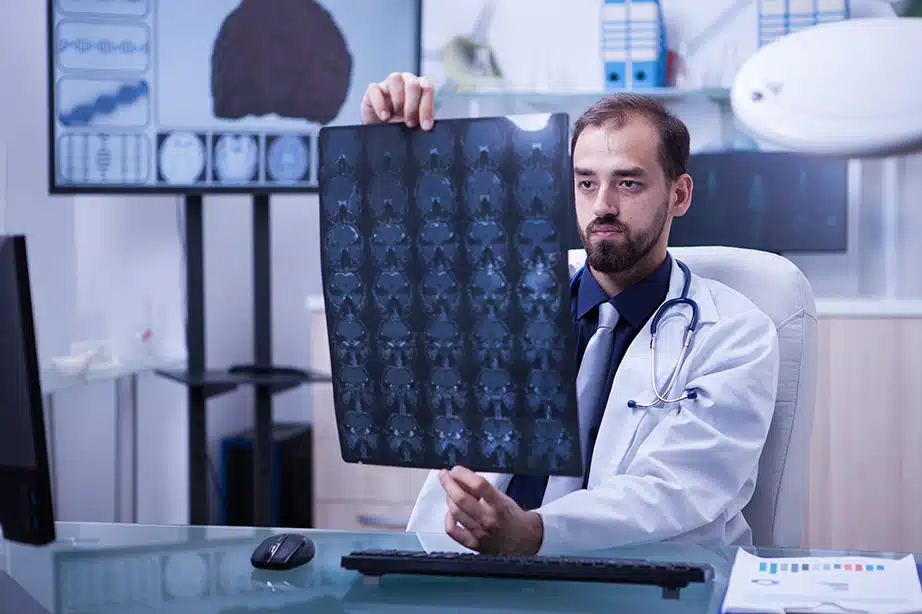Share
Cystic Fibrosis (CF) and Cannabis

The DNA or deoxyribonucleic acid is the molecule that contains the blueprint or the development, functioning, growth and reproduction of all known organisms. For human beings the DNA is passed down from the biological parents with little variations from individual to individual, these variations account for differences in appearance, personality and even health as the presence of certain genes along with other biological and environmental factors can be associated with several health conditions.
Each cell, in a healthy human body, contains 23 pairs of chromosomes, this is the name given to the tightly wound form the DNA takes to fit in the cell nucleus, 23 pairs originate from the mother and the other 23 from the father, of those 46 chromosomes – 44 are called autosomes and are similar in both male and females, the remaining pair determines the person’s gender, XX – for females and XY for males.
Autosome genes are further subdivided into “dominant”, if only one pair is needed to manifest a certain trait, one example is the blood type with both A and B types being dominant over O type, for this blood type to manifest as phenotype (the set of observable characteristics or traits of an organism) both parents have to have a copy of a “recessive” gene, and one has to inherit the same gene from both parents for the trait to manifest itself. The following chart clarifies the concept for better understanding:
| ParentsBlood Type | OffspringBlood Type |
|---|---|
| AA | A |
| AO | A |
| OO | O |
Some diseases such as sickle cell disease and cystic fibrosis are also passed down amongst generations of a family through autosomal recessive inheritance.
Cystic Fibrosis (CF) is the most common life-shortening autosomal recessive disease, with more than 70 000 patients registered throughout the world, and approximately 1000 new cases diagnosed every year, the average age of diagnosis is at the tender age of 3. The last decades have yielded considerable improvements in health outcomes for patients with CF, resulting in a substantial increase in life expectancy from a condition that was once a death sentence for infants and young children. However, CF, still represents a significant burden for the diagnosed, caregivers and families.
The cause of CF lies in the pathogenic mutations in a single gene located on chromosome 7, and that encodes the cystic fibrosis transmembrane conductance regulator (CFTR), a protein essential to regulate the fluid and electrolyte homeostasis in many mucosal surfaces (the membranes that lines various cavities and internal organs in the body). If CFTR is defective or absent a viscous mucus starts to accumulate in the pulmonary and gastrointestinal tracts among others, due to its abnormal consistency this fluid cannot be eliminated by the body, resulting in infections, inflammation, malnutrition, and finally, progressive multi-organ failures.
Key Symptoms and Complications of CF:
- Respiratory: Lung disease (bronchiectasis) with persistent airway-based infection and inflammation.
- Digestive: Exocrine pancreatic insufficiency leading to nutrient malabsorption, undernutrition, and impaired growth.
- Liver: Hepatobiliary manifestations (e.g., liver disease, gallstones).
- Reproductive: Male infertility.
The complexity of cystic fibrosis, which affects multiple organs, poses challenges for treatment. However, significant advancements have been made. Therapies targeting symptoms, such as airway clearance techniques, nebulized drugs for mucus obstruction, oral and inhaled antibiotics for infections, and pancreas enzymes for malabsorption, have been instrumental. Additionally, the discovery of the CFTR gene in 1989 lead to the development of CFTR modulators, therapies which aim to correct the defective proteins. These combined efforts have significantly improved the quality of life for individuals with cystic fibrosis, however there is still a long way to go has these therapies are complementary to others and have drawbacks and limitations, for instance one of the main problems in the current treatment is the high prevalence of pulmonary infections with antibiotic resistant pathogens, different gene mutations cause different defects in the protein, so the modulators developed o far are effective only in people with those specific mutations. The mucus secretion that clog airways still needs to be drained, this is done with chest physiotherapy, postural drainage and percussion.
As such there’s a need for new therapeutic options and explore other pathways to treat CF, like the role of cannabinoids. Patients with CF frequently experience chronic pain, anxiety, depression, and insomnia. Marijuana has been proposed as a potential treatment for these conditions. However, its use in CF patients is complex due to the potential risks associated with inhalation and the limited research on its effectiveness for specific CF symptoms. While the lungs are the primary cause of mortality in 90% of CF patients, the increasing lifespan of individuals with CF has led to a growing focus on non-respiratory complications. A recent study found that 15.4% of CF patients used medical marijuana in the previous year, primarily for anxiety, musculoskeletal pain, and appetite stimulation. The majority of users reported significant benefits with minimal adverse events.
However, it’s important to note the potential risks associated with marijuana use. Short-term side effects can include dizziness, dry mouth, nausea, fatigue, loss of balance, and hallucinations. Long-term concerns include increased risk of psychotic episodes, neurocognitive issues, motor vehicle accidents, and emergency department visits. Additionally, marijuana use can exacerbate lung problems in CF patients, potentially leading to chronic cough, sputum production, wheezing, shortness of breath, and acute bronchitis.
Given the complex nature of CF and the potential risks and benefits associated with marijuana, it’s crucial for CF patients to consult with their healthcare providers to discuss the potential benefits and drawbacks of using medical marijuana as a treatment option.
Clinical Trials
To date, no clinical trials have been conducted for Cystic Fibrosis and Cannabis
References
Bierlaagh, M. C., Muilwijk, D., Beekman, J. M., & Van Der Ent, C. K. (2021). A new era for people with cystic fibrosis. European Journal of Pediatrics, 180(9), 2731–2739. https://doi.org/10.1007/s00431-021-04168-y
Chen, Q., Shen, Y., & Zheng, J. (2021). A review of cystic fibrosis: Basic and clinical aspects. Animal Models and Experimental Medicine, 4(3), 220–232. https://doi.org/10.1002/ame2.12180
Bell, S. C., Mall, M. A., Gutierrez, H., Macek, M., Madge, S., Davies, J. C., Burgel, P., Tullis, E., Castaños, C., Castellani, C., Byrnes, C. A., Cathcart, F., Chotirmall, S. H., Cosgriff, R., Eichler, I., Fajac, I., Goss, C. H., Drevinek, P., Farrell, P. M., . . . Ratjen, F. (2020). The future of cystic fibrosis care: a global perspective. The Lancet Respiratory Medicine, 8(1), 65–124. https://doi.org/10.1016/s2213-2600(19)30337-6
Stephen, M. J., Chowdhury, J., Tejada, L. A., Zanni, R., & Hadjiliadis, D. (2020). Use of medical marijuana in cystic fibrosis patients. BMC Complementary Medicine and Therapies, 20(1). https://doi.org/10.1186/s12906-020-03116-x

























